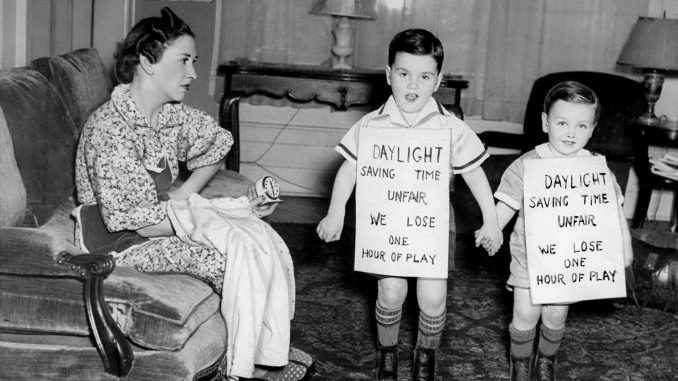
In a rare display of unison, the Senate unanimously passed a bill by voice vote that would make daylight savings time permanent in 2023. The bill, titled the Sunshine Protection Act, would stop the twice-annual changing of clocks, ending the practice of “falling back” or turning the clocks back on hour to standard time in the fall.
Senator Marco Rubio, Republican of Florida, who created the bill, told the Senate, “One has to ask themselves after a while: Why do we keep doing it?” Mr. Rubio added, “The majority of the American people’s preference is just to stop the back-and-forth changing.”
The chances of the bill passing are unknown, as it now must be approved in the House of Representatives and be signed by Pres. Biden.
A survey done by the Associated Press found that seven in ten Americans prefer not to switch their clocks for daylight savings.
However, it’s less clear which time system people prefer. Four in ten Americans state they would like their clocks to stay on standard time all year around, while three in ten prefer to stay on daylight saving time.
Clocks are shifted ahead one hour for Daylight Savings Time (DST), making it so that an hour of daylight very early in the morning is shifted to the evening when most people are done working and can enjoy leisure. The goal of DST is to preserve as much sunlight for waking hours in the summer months.
Standard time is on from early November to mid-March in all states except for Hawaii and Arizona, which have opted out. It began as a temporary measure in World War I to save electricity by having to use less coal with an extra hour of daylight. It remained due to lobbying efforts from farmers who have always disliked DST because losing an hour of daylight in the morning disrupts their “early rise” agricultural work pattern.
Parents are another group of people who have voiced dislike for DST, as children are forced to leave for school in darker early mornings. Shopkeepers, on the other hand, favor it because an hour of extra daylight yields more commercial activity, as well as people prone to seasonal depression who savor more sunlight in the later hours.
This is not the country’s first attempt at a permanent daylight savings time. In Jan. 1974, Pres. Nixon signed year-round daylight-saving time into effect to make an ongoing national gas crisis less painful by maximizing evening sunlight. While the change was initially popular amongst Americans, this quickly changed. 79% of Americans supported permanent DST in Dec. 1973, but by Feb. 1974, support had plummeted to 42%. The main drawback to permanent DST was how dark early morning winters were, which had children leaving for school in the morning in the darkness.
In Oct. 1974, Pres. Gerald Ford signed legislation that got rid of permanent DST to avoid another long, dark winter. A Senate committee report stated, the “majority of the public” had expressed “distaste” for DST during the winter.
Now 50 years later, Americans may face this change again. Ultimately, there’s no way to please everyone, but now the country is left to see if a possible, permanent DST will last this time.

